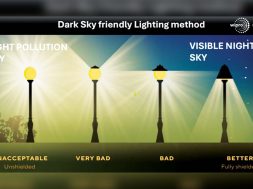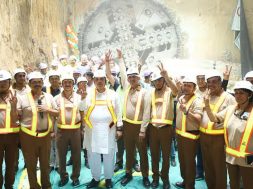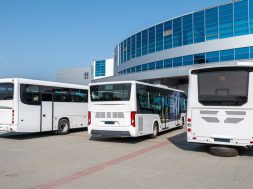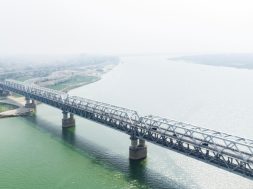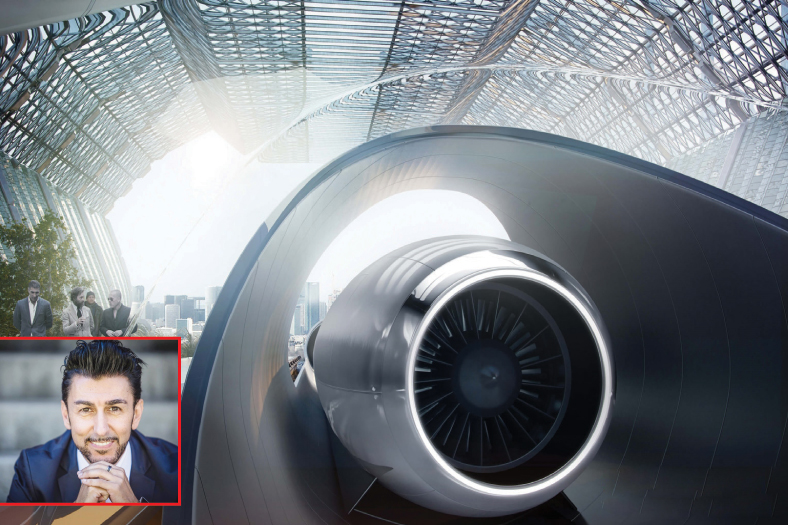Mumbai metro dream closer to reality
The face of Mumbai is going to change. With the introduction of Mumbai Metro, the City is all poised to become the International financial capital. Today, every Mumbaikar is counting for the day to welcome their ‘dream queen’. In an exclusive interview with Subhajit Roy; GR Madan, Director (MRTS), Mumbai Metropolitan Region Development Authority (MMRDA) updates on the ongoing project
Mr. Madan, how far are we from the corridor I to kicks-off?
First phase of Mumbai metro project is in progress and we are expecting the trains to run by March 2012. corridor I, the 11.7 km route with 12 stations will run between Versova and Ghatkopar via Andheri and entirely on an elevated formation.
Once operationalised, what will be the carrying capacity of corridor I?
When we talk of capacity, it is the capacity of a particular section where there is maximum demand. Initially, the service will be three and half to four minutes intervals. A four minutes service will allow us to run 15 trains in an hour. The four-coach trains will have a passenger carrying capacity of minimum 1,200 and maximum of 1,500. So, if each train carries 1,500 passengers, the maximum sectional capacity will be 22,500. Initially, we are expecting around 6 lakhs passengers which can be augmented up to 9 lakhs.
The capacity what you are saying may suffice to meet current demand. But keeping the increasing rate of city’s population in mind, don’t you think of alternate options?
Though, we are going to start with the four-coach trains, there are lots of built-in features that can increase the passenger carrying capacity. All the stations are being designed for six-coach trains. So, by connecting additional two coaches, we can straightway increase 50 per cent capacity.
Secondly, at the beginning, we’ll be running on four minutes frequency in terms of service. By accelerating frequency to three minutes, we can run 20 trains per hour instead of 15.
Won’t there be problems from supporting infrastructure?
The infrastructure is being built to support the additional load in terms of increasing number of coaches and frequency. But whenever there is a need to increase the capacity, we need certain inputs. If we want to increase from four-coach to six-coach trains, we will have to procure more coaches. Again, if we wish to run more trains, we must procure more trains, and to run additional trains we need to increase the number of motormen. But after a long time, to say after 15 years, if we need to increase the capacity further (beyond six coaches and three minutes service), we need to assess every stage well in advance and additional inputs are to be set up accordingly.
From where are you sourcing the coaches?
The Chinese rolling stock manufacturer CSR Nanjing Puzhen Rolling Stock is supplying the coaches for corridor I project. We have ordered 64 coaches for three and half minute’s frequency.
What kind of safety features will be installed to regulate high-volume of traffic?
We are going to install most advanced signaling technology, including automatic train protection system (ATPS) and automated signaling to control the high-volume of train movements on the 11.7 km line.
What is the planned expenditure for the project?
For the first corridor of 11.7 kms, an expenditure of Rs. 2,356 crore has been estimated out of which Rs. 650 crore has been allotted by MMRDA as grant. The balance amount, Rs. 1,706 crore has been funded through equity and debt in the ratio of 30:70 where 30 per cent (about Rs. 500 crore) is the equity and 70 per cent (about Rs. 1,206 crore) is debt which the bankers give loan to the company and the company along with the interest is suppose to return back once the system starts running.
Within that 30 per cent, MMRDA is further having equity of 26 per cent and the balance 74 per cent is the private partners’ equity.
If the expenditure goes beyond the estimated one, what will happen?
If the expenditure goes beyond the estimated Rs. 2,356 crore, there is no provision in signed contracts that will allow us to pay anything extra. It is the sole responsibility of the special purpose vehicle. It should manage the project within the estimated cost. For corridor 1, a special purpose vehicle namely Mumbai Metro One Pvt Ltd (MMOPL) has been incorporated for implementation of the project. Reliance Infra holds 69 per cent of the equity share capital of MMOPL, while MMRDA holds 26 per cent and remaining 5 per cent is held by Veolia Transport, France.
It is the country’s first MRTS to be built on a PPP format. How do you see the increasing opportunities in infra sector through PPP?
There are two major reasons why we are going for PPP. First reason is fund. Projects like Mumbai metro are basically public projects. It is the responsibility of the government to provide the task force service or privatise – but government do not want to privatize fully because public may not like it. At the same time the government does not have enough money for funding the projects fully. Thus concept of PPP has been accepted as the middle way to fund public projects with private and government’s investment.
Secondly, there is a common perception that private parties are more efficient because of the difference in decision making process and management style.
That is one of the thoughts; but one point is clear that the government does not want to create a separate organization for a project. So, by going for PPP, there are possibilities of bringing efficiency at work – at the same time reducing liabilities.
As there is lot of infrastructure development happening across the country, is there a need for MRTS in the upcoming cities?
The government has issued a document called National Urban Development Policies which says that cities with 1 million populations should start planning for MRTS. But perhaps 1 million may be a little low initially we may target 2 million plus. But if we target around 4 million plus populations also, there is a need to provide effective public transportation; otherwise cities will get choked automatically. So, depending upon the need we can opt for the light rail, monorail, and heavy Metro systems.
Many people opine in favour of constructing roadways rather than railways. I personally feel that there are different systems required for different capacities. Heavy duty Metros have got heavy duty systems whereas BRTS has got limited capacity. BRTS should be used where capacity requirement is between 10,000 and 15,000. For Monorail, it is 7,000 to 10,000. LWT or light weight transit is modern high speed tramway which can be used by providing dedicated path for them. So, various systems are required for various requirements. Public transport along with private transport is a must in all the cities. The earlier the governments start planning, the better. For example, the rail transport for Navi Mumbai was planned from the day one of planning the city.
What about the second corridor?
Second corridor is the 32 km long route that will run between Charkop-South Bandra via BKC-Mankhurd. This time also we have gone for a PPP model. But the model is slightly different from the corridor 1. For corridor 2, we have decided not to provide any equity, but will provide grant. The estimated expenditure is Rs. 7,760 crore out of which Rs. 2,258 crore (around 30 per cent) will be given as grant. The Government of India to allocate Rs. 1,532 crore of grant out of the total Rs. 2,258 crore, and balance Rs. 726 crore will be provided by MMRDA. A special purpose vehicle, namely, Mumbai Metro Transport Pvt Ltd (MMTPL) has been incorporated for the implementation of the corridor 2. In this case, Reliance Infrastructure holds 48 per cent of the equity share capital of MMTPL, while SNC Lavlin Inc Canada and Reliance Communication Ltd holds 26 per cent each. In corridor 3, the Colaba – Bandra line, we are not going for PPP.
Corridor 1
(Route: Versova – Andheri – Ghatkopar)
Route length : 11.07 km
Elevated alignment : 100 %
Maximum gradient : 4.0%
Minimum curvature : 100 m
Minimum Ground Clearance : 5.5 m
No. of stations : 12
Platform Length : 135 m
Car Depot : DN Nagar
Length of coach : 22 m
Width of coach : 3.2 m
Cookie Consent
We use cookies to personalize your experience. By continuing to visit this website you agree to our Terms & Conditions, Privacy Policy and Cookie Policy.
